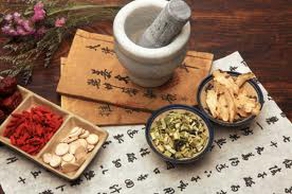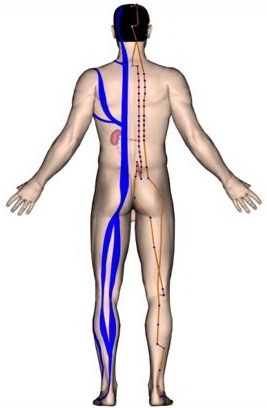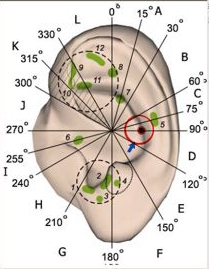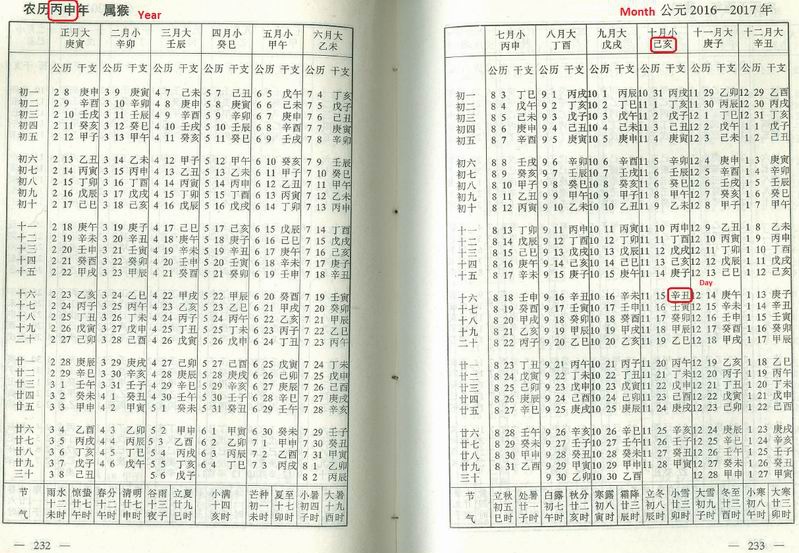Raw materials
There are roughly 13,000 medicinals used in China and over 100,000 medicinal recipes recorded in the ancient literature. Plant elements and extracts are by far the most common elements used. In the classic Handbook of Traditional Drugs from 1941517 drugs were listed - out of these, only 45 were animal parts, and 30 were minerals.For many plants used as medicinals, detailed instructions have been handed down not only regarding the locations and areas where they grow best, but also regarding the best timing of planting and harvesting them.
Some animal parts used as medicinals can be considered rather strange such as cows' gallstones.


We use different massage techniques, depending on the individual patient's needs.
Performance linear sinew channels massage

Traditionally used basic channels points (309 on each side of the body), point the front and back medial channels (52 points), point outside of channels and new points (171 and 110 on each side of the body), as well as 18 hand-points "dian "on each side.
Metodology:
Auricular acupuncture is well known to the Chinese sources for a long time, the founder of the European school of auricular acupuncture was a French physician and researcher Dr Paul Nogier, who wrote a great job of describing the auricular acupuncture points and ear zones, and offered a lot of treatments.
Real discovery for us was the work of Professor R.A.Durinjan, atlas of ear zones and projections of organ systems in the ear we use in practice constantly and with great results.

Traditional Chinese acupuncture points in addition to the main channels of acupuncture also includes 18 hand toche "dian", each of which has its own purpose.
The most complete and thorough concept of impact points of the hands and feet developed in the Korean medical tradition. It uses an arsenal of special skin acupuncture needles, special injectors for their introduction, probes, magnets, etc. Deserve serious attention of Prof. Park Jae Woo, and he created the International Association of Su Jok and Su Jok Academy (see useful links, you will find the addresses of web pages).
Superficial skin acupuncture Hua Mei Zhen done for certain lines of the body disposable needle hammer until persistent redness.
Warming sagebrush cigarettes (generally referred to as "moksa", although it is a Japanese term, in line with the traditional Chinese medicine, the term "jiu" is correct). There are many different feeds of this therapy, we use a smokeless cigarette or mini versions because traditional cigarette applicable only with the convenience of the fresh air.
Vacuum therapy
We use the classic cupps, and suction cupps with magnets, vacuum cupping massage and micro bleeding with vacuum cupps and micro lancet.
These are just some of the classical methods, we use many other methods to influence points and zones, both modern (laser therapy, ultrasound), and the more traditional ones.
PRACTICAL USE
Conversion of the Chinese dates into dates of another time zone:
Keeping in mind the time difference in different time zones, as well as introduction of summer/winter time in different countries, we can calculate the following examples:

This technique is based on the traditional Chinese time measurement system and the current version of the "traditional Chinese calendar" which is also used in numerology and Feng Shui arrangements.
In this time measurement system years, months, days, and watches (2-hour periods) are marked by two ordinals — one of the 10 Heavenly Stems (representing phases of the descending Heavenly energy cycle) and one of the 12 Earthly Branch (representing phases of the receiving Earthly energy cycle). In this text we will use a simplified notation “sNbN”, whereas sN is the stem number, bN is the branch number.
As many things in China, the characters of these two cycles may be attributed to Yin or Yang principle:

Classical techniques for selecting open active points for Chinese acupuncture procedures are based on the philosophy of the Chinese calendar. Whose features and the system of cyclic laws are described in a large number of scientific works.
These are classic techniques:
- Definition of open points according to the "Earth Branches" method
- Definition of open points according to the "Heaven Stems" method
- Definition of open "five shu" points
- Definition of open points similar to the "five shu" points
- "Zhuke Yuanluo peixue" method
- Use of Extraordinary channels ("Ling Gui Bafa" method)
- Time of the day and the "Fei Teng Bafa" method
- Definition of open points according to the theory of partner days
- Definition of open points according to the five elements production cycle
- Additional points on the TR and MC channels
These "opening and closing" points are located in the active zones of the canals on the distal parts of our limbs, below the knee on the legs and below the elbow on the hands.
I have been practicing the calculation of these points for quite some time, and I still have our PC program in use that calculates this discovery. I am not sure of the omnipotence of this technique, although just in case I continue to use it in difficult cases. Since I have many different methods in my arsenal, in the case of "closing the right point" I will find what to do. In modern times, there is no need to rely on only one therapeutic technique, it is ineffective.
In addition, there is also a cycle of daily activity of channels (12 guards for 2 hours), which definitely makes sense to take into account, because it largely coincides with a change in the activity of internal organs during the day.
Activity cycles do not affect the operation of segmental and other corporate points.

